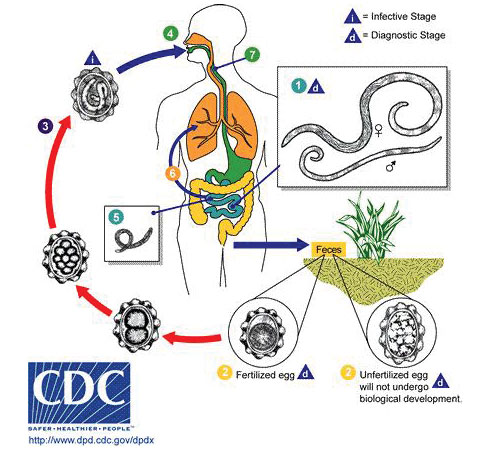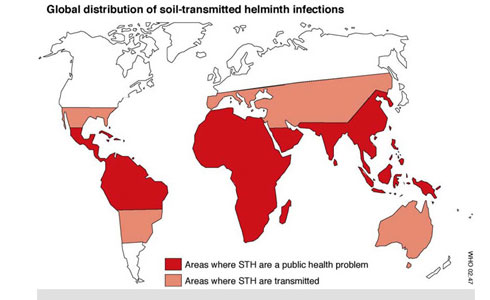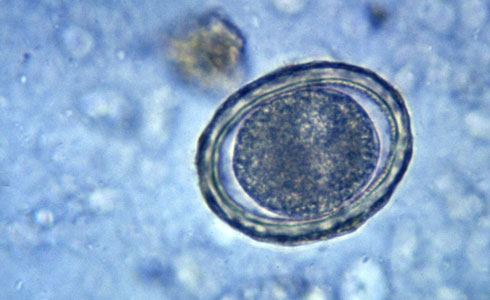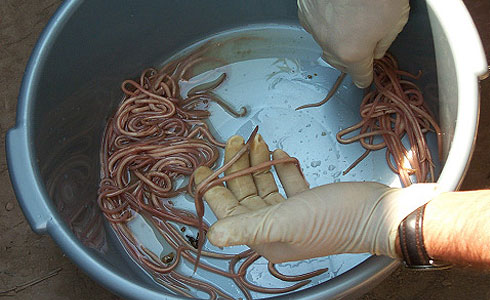Ascaris lumbricoides (giant roundworm)
Ascaris lumbricoides is a soil-transmitted helminth (parasitic) worm. It is common in tropical and sub-tropical regions and causes a disease called ascariasis.
People become infected when they ingest worm eggs from soil.
It lives and reproduces inside its human host.
The worm cleverly works its way through the body from the gut, via the liver and heart, to the lungs and back to the gut.
Symptoms of the disease vary, and some people don’t even realise they are infected (they are 'asymptomatic').
People infected with multiple worms experience diarrhoea, abdominal pain, general malaise and weakness. These symptoms can affect people’s ability to work and learn, and can impair physical growth.
Species detail
The ascaris worm can reach half a metre in length.
Images

Life cycle of Ascaris lumbricoides.
© CDC
Global distribution of soil-transmitted helminths including Ascaris.
© World Health Organization
A fertilised egg of the Ascaris lumbricoides - fertilised eggs are round and have a thick shell.
© CDC
Ascaris worms from one child in Uganda.
© Russell Stothard
Ascaris worms.

Ascaris worms.
About the author
Dr Martha Betson
Former Post-doc research assistant
Zoology biomedical parasitology research
Department of Zoology


